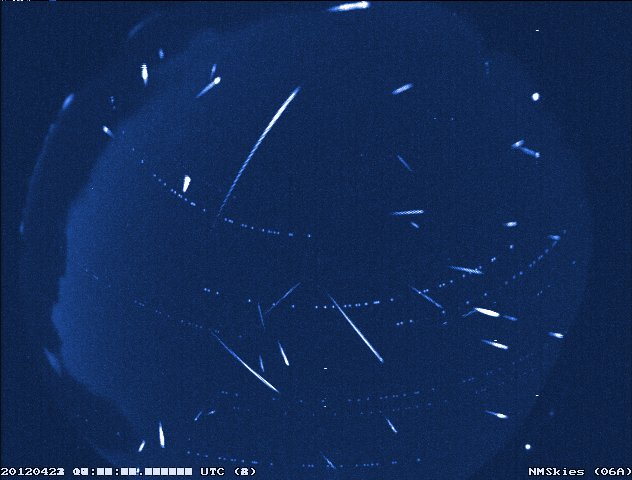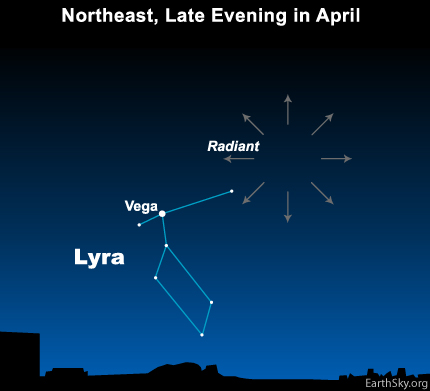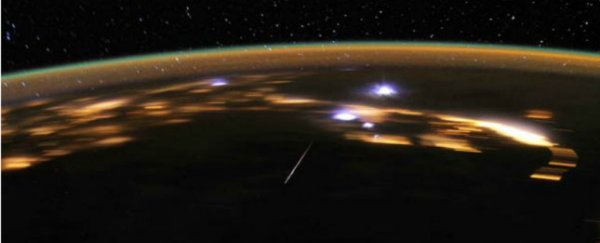Earth is currently passing through the trail of dust left behind by an ancient comet, and it's creating the perfect night of stargazing for those in the Northern Hemisphere.
The Lyrid meteor shower will peak overnight on 21/22 April, and we'll be treated to pretty uninterrupted dark skies thanks to a waning crescent Moon. No telescopes are needed, just grab a blanket and head outside in the pre-dawn hours to be treated to seeing around 20 meteors an hour streaking across the sky.
The Lyrid meteors are pieces of debris trailing behind the comet Thatcher, which was discovered and last seen passing Earth in 1861.
Its 415-year orbit means that it won't head our way again until 2276, but each April, Earth travels through the space dust dragged in the comet's wake.
These small pieces of dust smash into Earth's atmosphere at around 176,400 km/h (109,600 mph), "vaporising from friction with the air and leaving behind the streaks of light we call meteors," Richard Talcott writes for Astronomy Magazine.
Moonlight can often drown out the Lyrids, but this year, experts are calling conditions "good-to-excellent" for most parts of North America.
"If clear sky prevails Saturday morning (April 22nd), we might expect to see between 10 to 20 meteors per hour under dark, moonless skies," Bob King writes for Sky and Telescope.
"Best viewing should occur between 2 am and dawn Saturday … Expect little lunar interference - the waning crescent won't rise until shortly before the start of morning twilight."
 Composite image of meteors over New Mexico in April, 2012. Image: NASA
Composite image of meteors over New Mexico in April, 2012. Image: NASA
How to watch
Meteor showers are named after the constellation they appear to radiate from in the night sky, and the Lyrids are named after the constellation Lyra.
You should be able to see them from anywhere in the night sky after around 9 or 10 pm local time in the Northern Hemisphere, but to pinpoint their origin, look for the bright star Vega in the night sky.

Although the meteors should be visible for most of the night, NASA says the best viewing time will be in the hours before dawn.
You'll need to head somewhere dark, preferably away from city lights, and give yourself at least an hour to watch the skies so your eyes have time to adjust - don't forget a blanket or hot drinks to stay warm.
"Simply find a dark, open sky away from artificial lights. Lie down comfortably on a blanket or lawn chair, and look straight up," NASA advises.
While the meteor shower usually delivers around 20 meteors per hour on clear nights, there have been a few "outburst" years where observers have reported seeing up to 100 Lyrids per hour - so keep your eyes peeled, you never know what you might see tonight.
If you're not in the Northern Hemisphere, or the weather is miserable where you are, you can also check out live coverage of the event over at Slooh (membership required).
Any space-loving instagrammers out there, don't forget to tag us in your photos. Happy skywatching!
